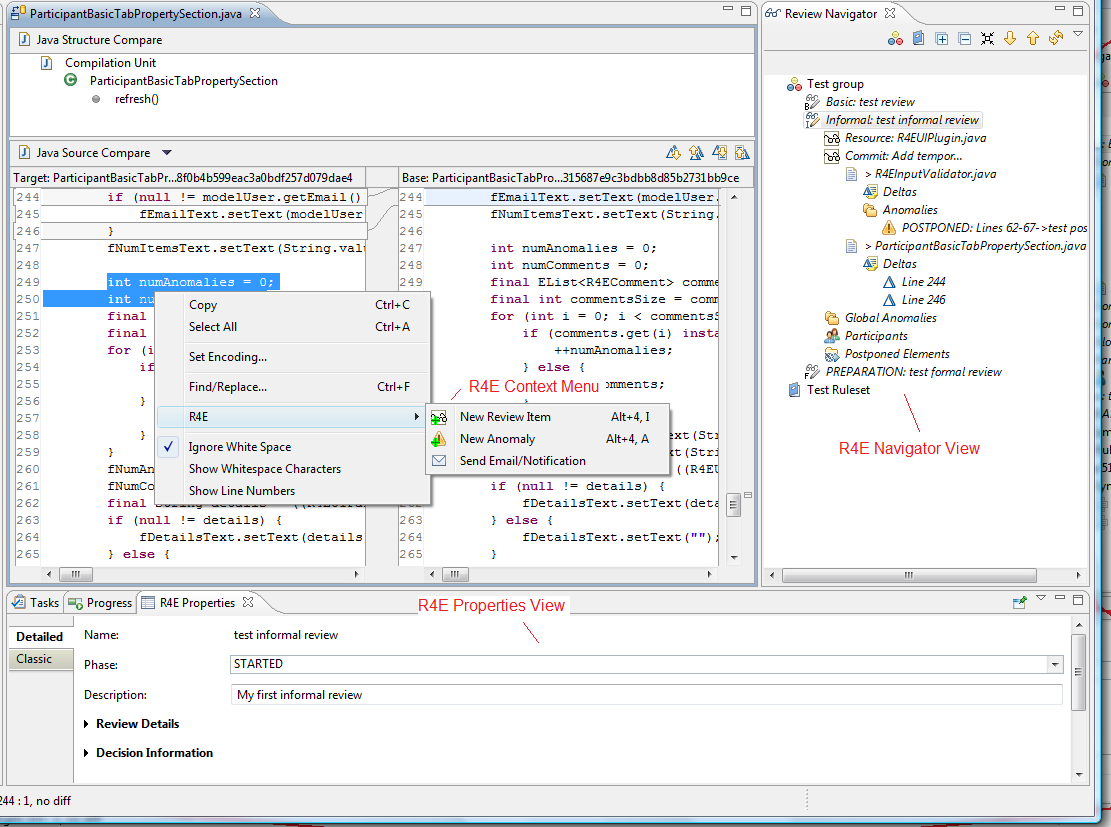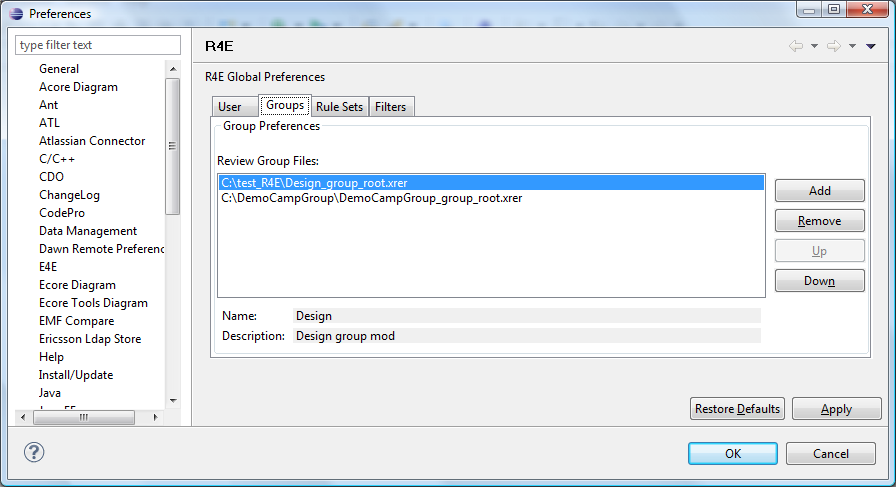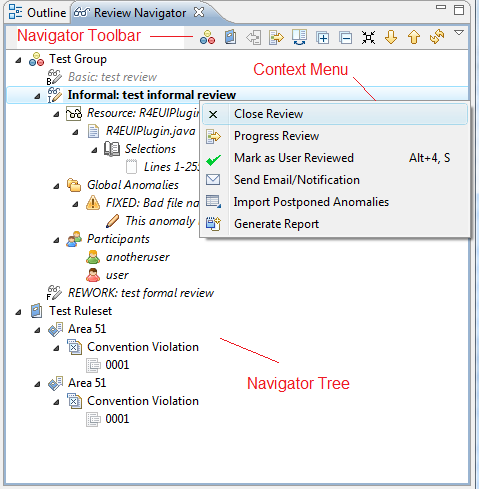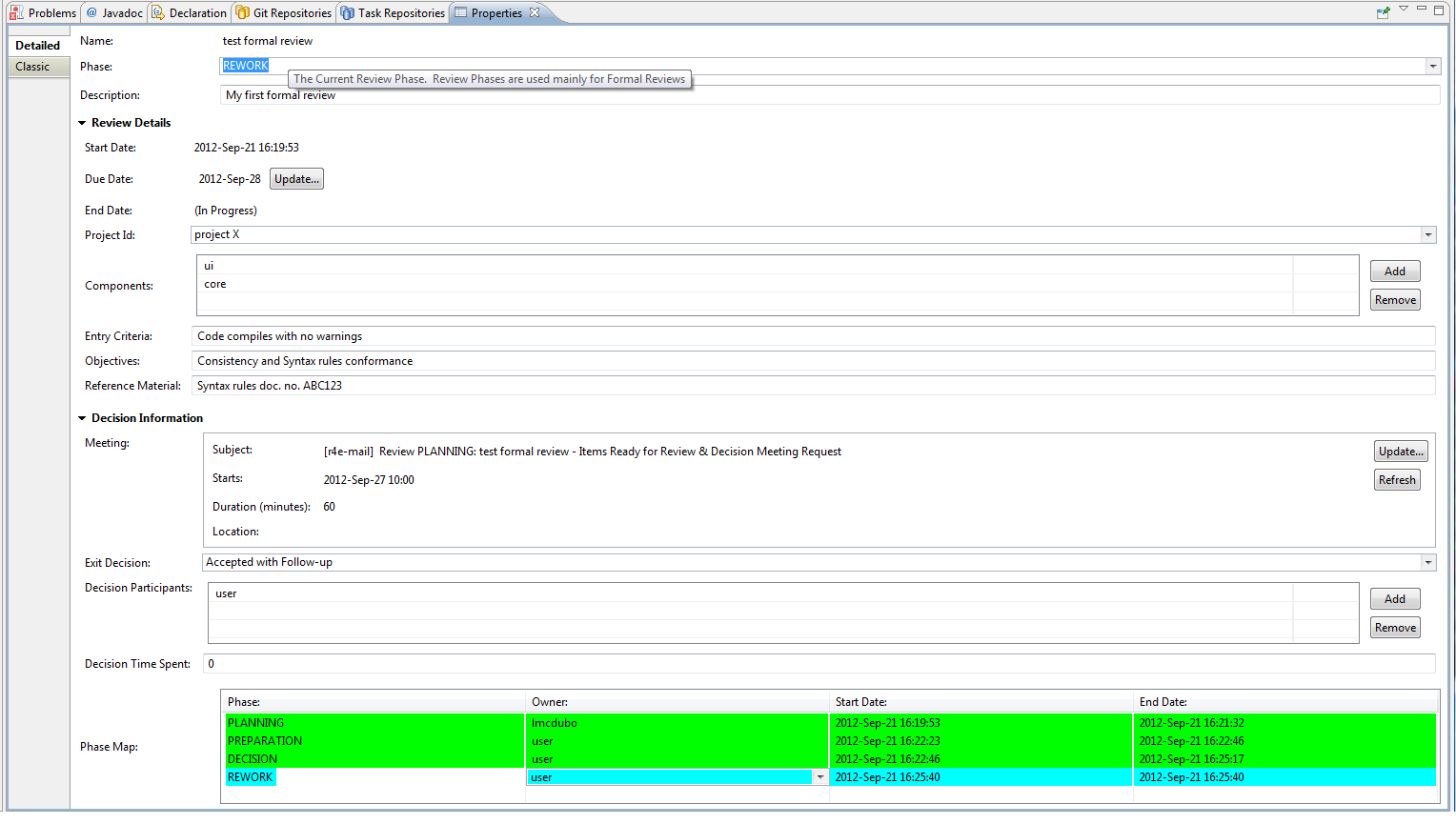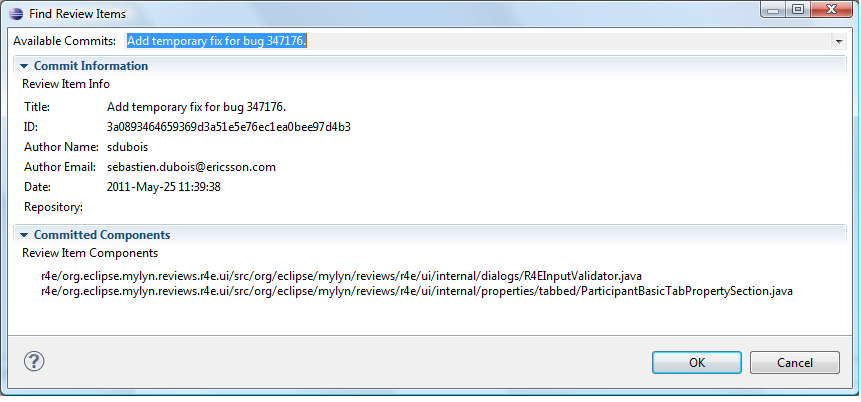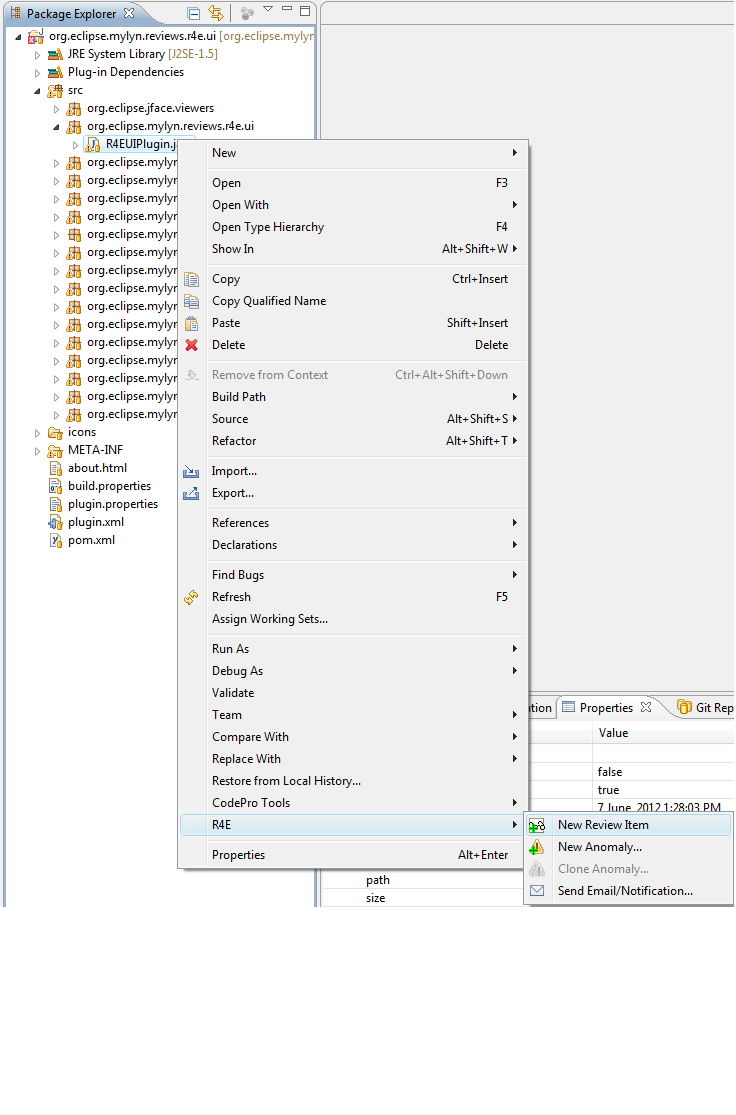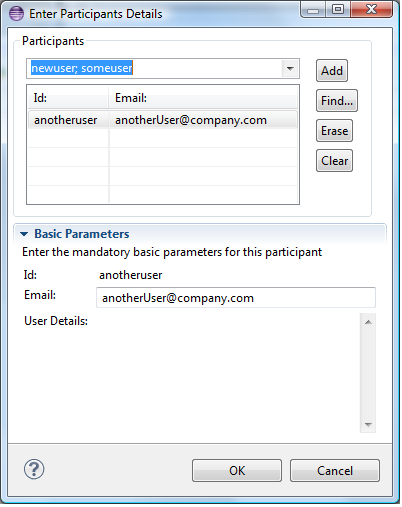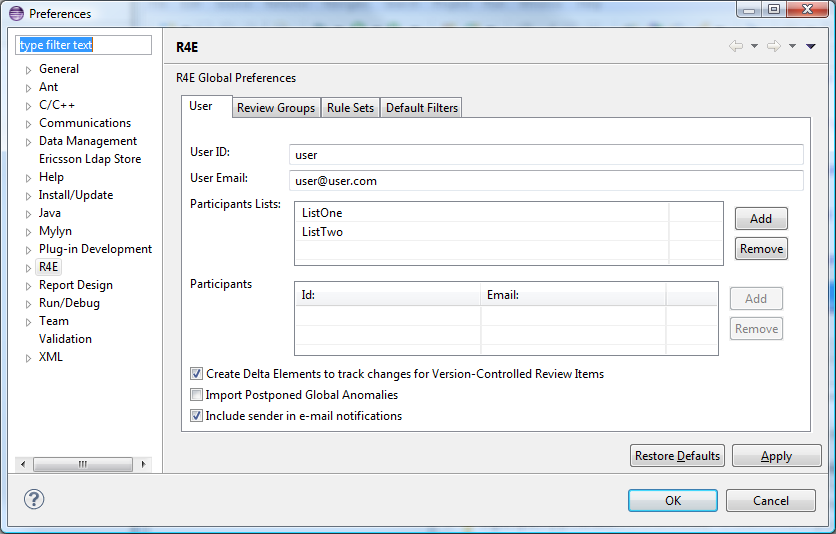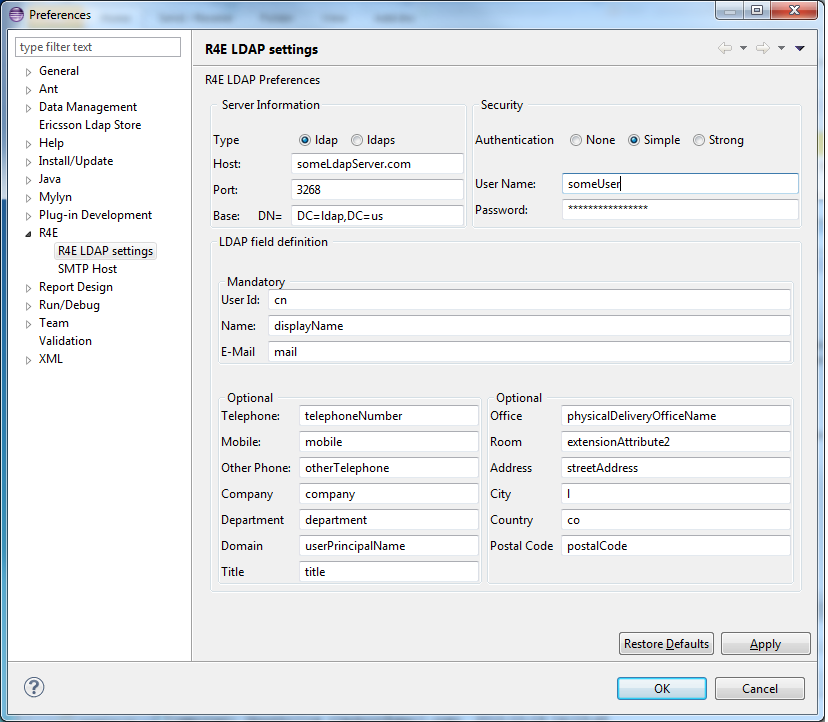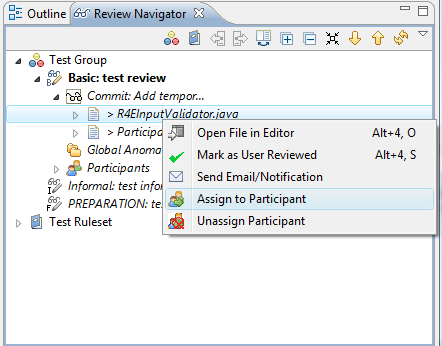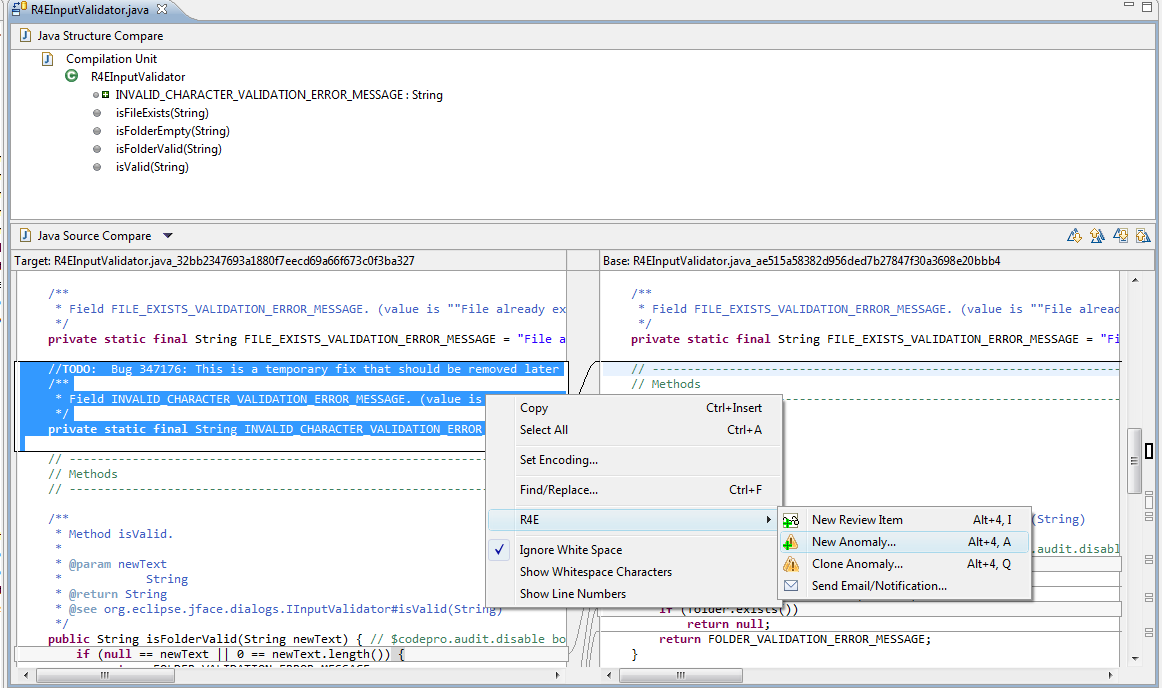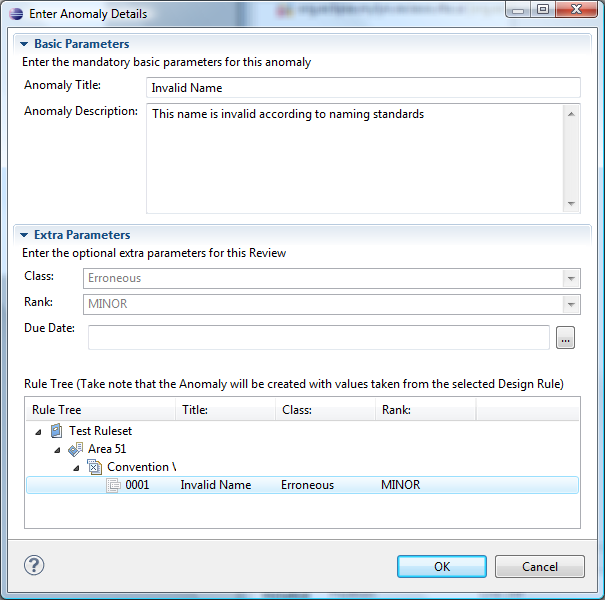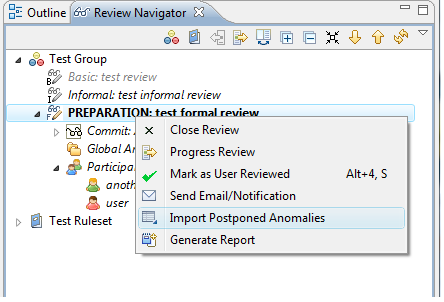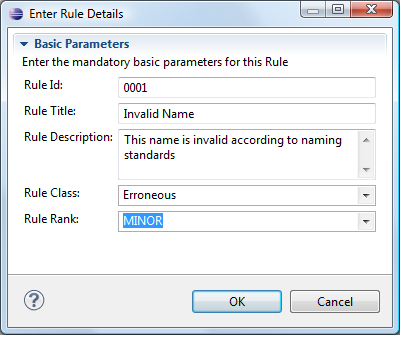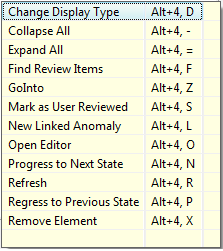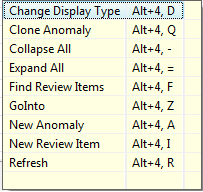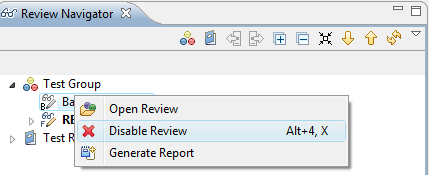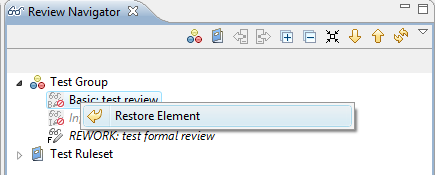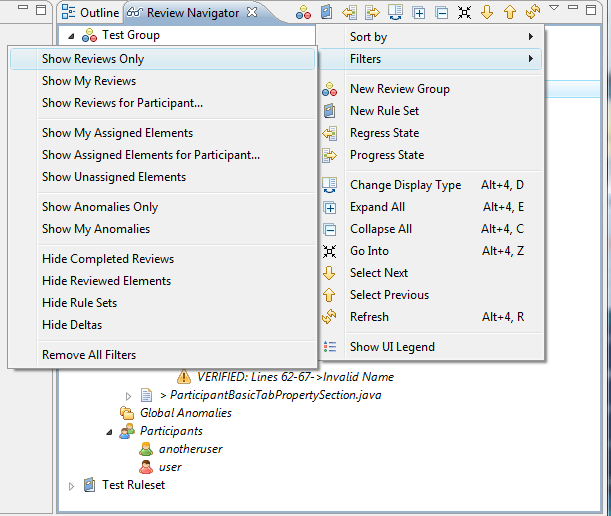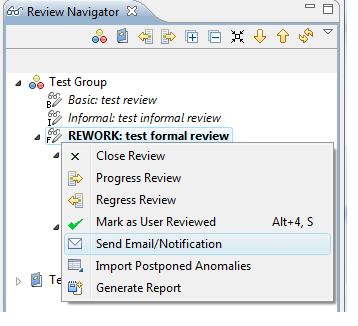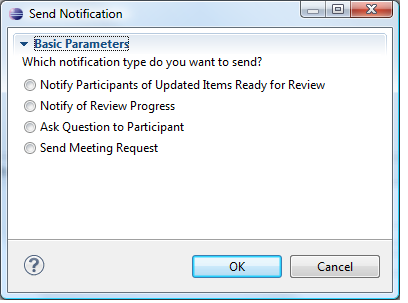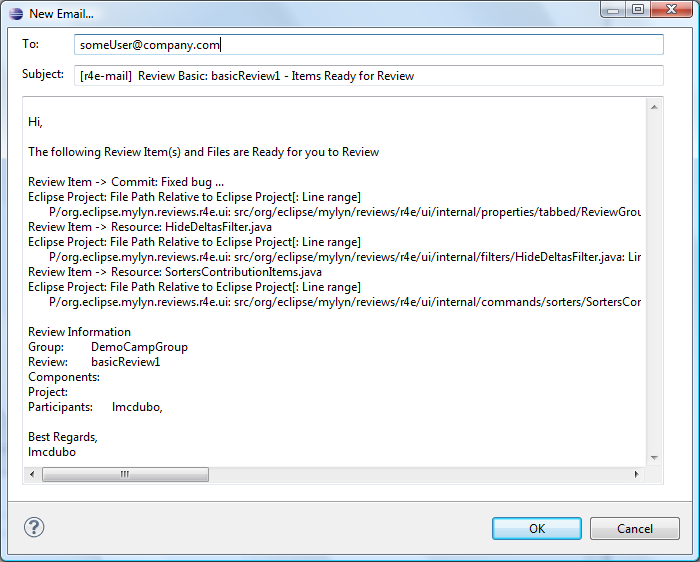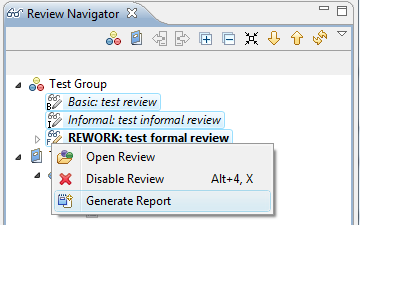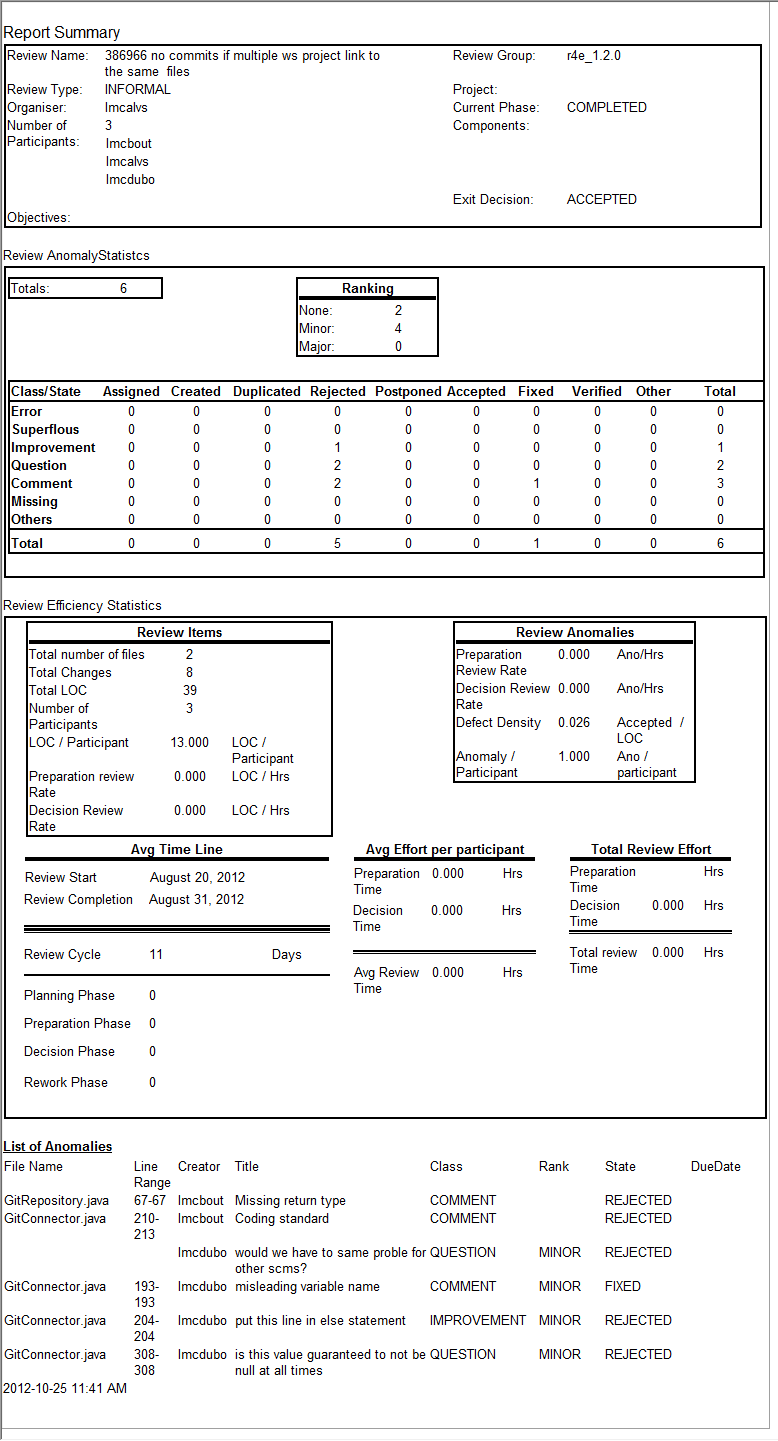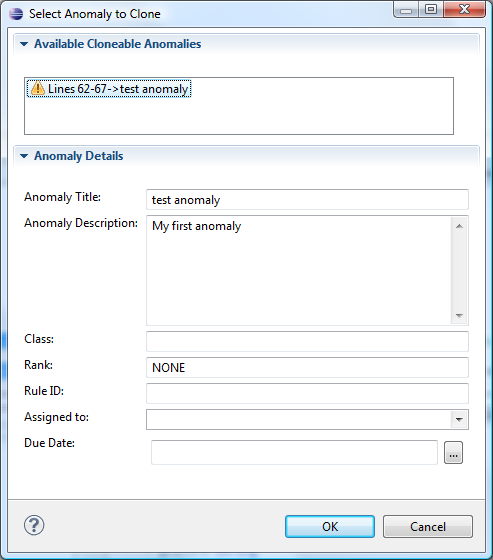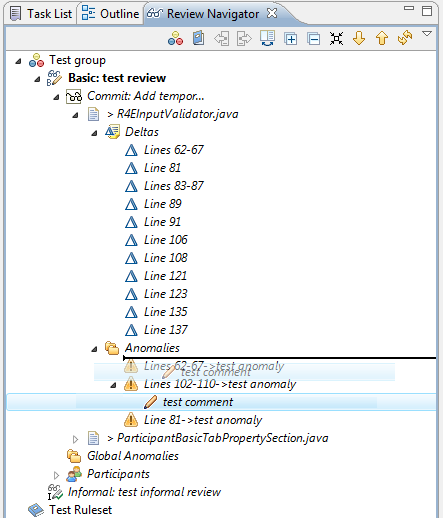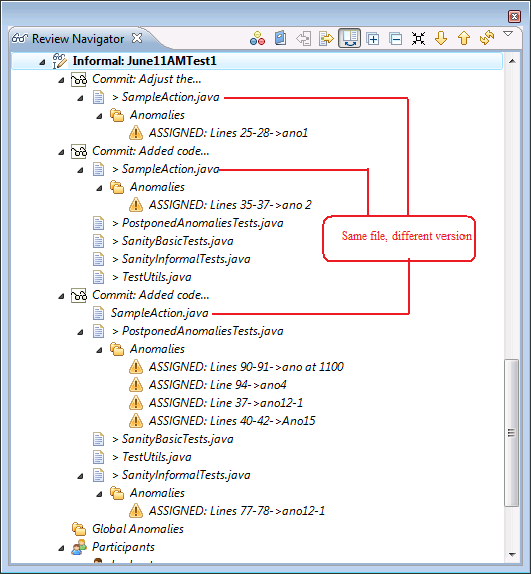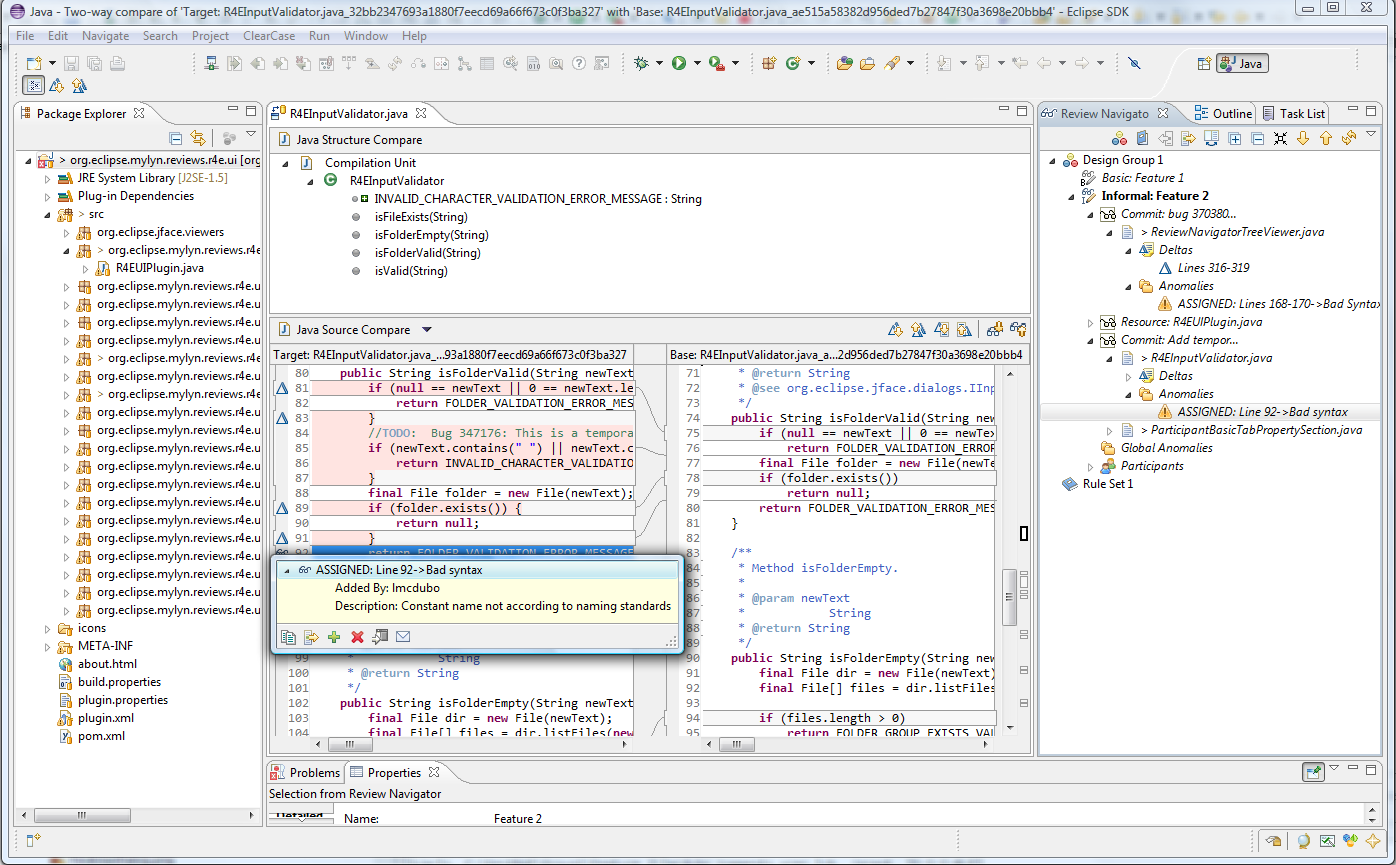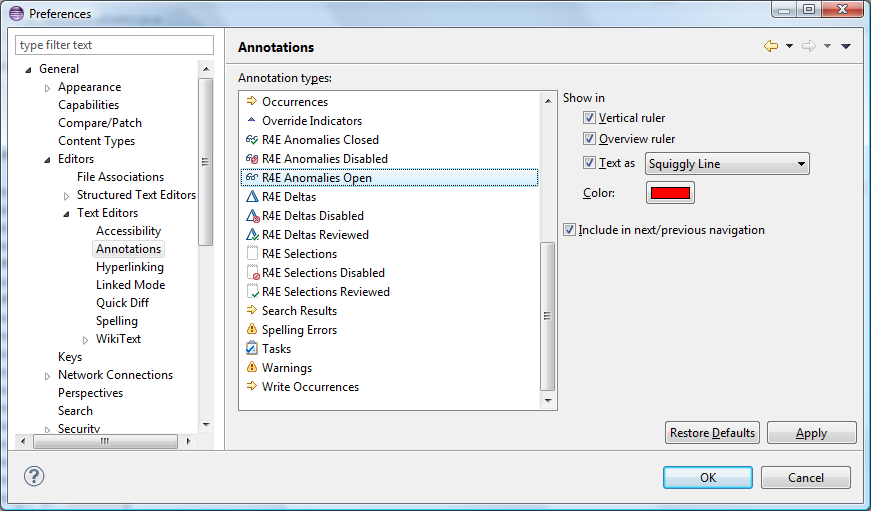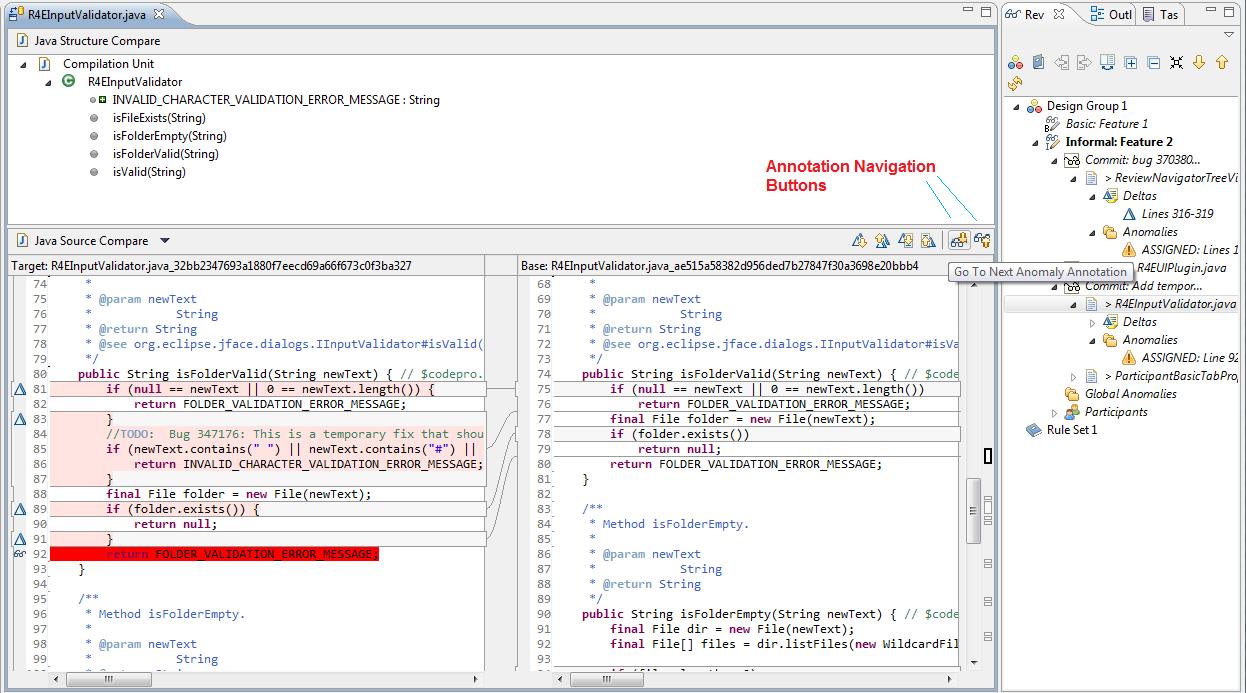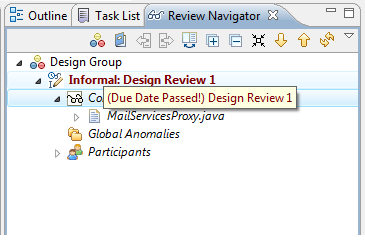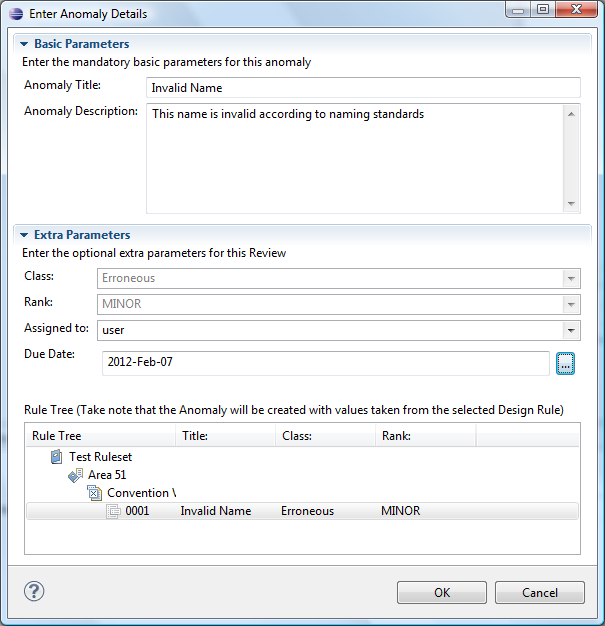Notice: This Wiki is now read only and edits are no longer possible. Please see: https://gitlab.eclipse.org/eclipsefdn/helpdesk/-/wikis/Wiki-shutdown-plan for the plan.
Reviews/R4E/2012EricssonInvolvement
This page describes Ericsson's involvement in Mylyn Reviews in general and Mylyn Reviews R4E in particular for the year 2012. Ericsson's involvement has multiple facets:
- New features are developed directly by Ericsson's employees
- New features are contributed by other companies with the help of committers working for Ericsson
- New features are implemented by companies sponsored by Ericsson
Below is a list of features implemented by Ericsson or with Ericsson's help or sponsorship in 2012.
More information can be obtained by visiting the R4E project webpage and Users Guide
Contents
- 1 Contributions for 2012
- 1.1 R4E initial 0.10 Release
- 1.1.1 Storage and Review Groups and Rule Sets management
- 1.1.2 3 types of Review flows:
- 1.1.3 New Review Navigator View
- 1.1.4 Integration with Eclipse Properties View
- 1.1.5 Seamless Integration with SVN and Git Version Control Systems
- 1.1.6 Manual Selection of Artifacts to Review
- 1.1.7 Review Particpants Handling
- 1.1.8 LDAP integration
- 1.1.9 Review Artifacts Assignement
- 1.1.10 Review Comments Handling
- 1.1.11 Local Postponed Anomalies
- 1.1.12 Design Rules support
- 1.1.13 Short Keys
- 1.1.14 Disabling/Restoring Review Elements
- 1.1.15 Review Navigator Filters and Sorters
- 1.1.16 Notification support
- 1.1.17 Report Generation
- 1.2 R4E 0.11 Release
- 1.3 R4E 0.12 Release
- 1.1 R4E initial 0.10 Release
Contributions for 2012
R4E initial 0.10 Release
The first release of R4E was done in May 2012. R4E is validated and supported for Eclipse 3.6.x (Helios), 3.7.x (Indigo) and 4.x (Juno) on the following platforms:
- Windows Vista 32-bit
- Windows 7 (32 and 64 bit)
- Suse Linux Enterprise Desktop (32 and 64 bit)
- Solaris 10
- Mac OS X 10.7 and up
It included the following features:
Storage and Review Groups and Rule Sets management
R4E data is stored in arbitrary file system locations, which is lightweight and avoids the need to configure a central server. Users can import the data (Review Groups/Reviews and Rule Sets) to their workspaces by pointing to the physical location where it is stored.
3 types of Review flows:
- Basic: Stateless Reviews and Anomalies.
- Informal: Stateless Reviews and Stateful Anomalies.
- Formal: Based on IEEE std. 1028-2008. Stateful Phased Reviews and Anomalies.
A Review Navigator View is provided for navigating within Review Groups, Rules Sets and Reviews.
The Review Navigator view can be displayed in the default Tree mode on in a Tree Table format to focus on specific artifacts to review.
Integration with Eclipse Properties View
The Eclipse properties view is used to visualize the information pertaining to the various R4E Review elements. It can also be used to change the values of writable elements.
Seamless Integration with SVN and Git Version Control Systems
R4E can automatically add artifacts to the review based on SCM Commits/Checkins
Manual Selection of Artifacts to Review
It is also possible to add manually selected Artifacts or parts of Artifacts to a Review
Review Particpants Handling
Users can be added to Review with different roles. They can be added separately, in batches or together in participants lists that are configurable per user.
LDAP integration
R4E can be configured to lookup for user information on an LDAP database for review participants
Review Artifacts Assignement
Artifacts under review can be optionally assigned to specific participants.
Review Comments Handling
In R4E, review comments are created as Anomalies that include mandatory tile and description, and optional information (Class, Rank and Due Date, as well as design rule reference), When using stateful anomalies, the state of the anomalies can be tracked and will have an impact on the review flow.
Local Postponed Anomalies
Anomalies on specific artifacts that are not solved (postponed) in previous reviews can be imported manually by users to the current review for resolution purposes.
Design Rules support
R4E supports the use of Design Rules, to help reviewers enforce consistent design conventions and rules.
Short Keys
R4E defines some keys as accelerator keys to help the user to perform reviews.
Disabling/Restoring Review Elements
Review Elements can be disabled and restored to avoid unnecessary information clutter for obsolete or deleted elements.
Multiple filters and sorters can be applied to the R4E Navigator view to avoid information overload and focus on the appropriate review elements.
Notification support
Email notifications can be automatically generated by users.
Report Generation
Using the BIRT framework, Inspection reports can be generated for R4E Reviews.
R4E 0.11 Release
Anomaly and Comments Cloning
It is possible to duplicate (clone) existing anomalies and comments to new locations either by using an editor context command, by dragging and dropping them in the Review Navigator view or by using default copy and paste hotkeys.
Global Postponed Anomalies
Global anomalies (i.e. not attached to a specific artifact) that are set to POSTPONED in previous reviews within the same review group can be imported into the current Review. This behavior is optional and controlled via the R4E preferences.
Duplicate Anomaly Handling improvements
Anomalies applicable to the same file version across multiple commits Review items are now represented as a single entry in the latest commit Review Item. This will remove a potential source of confusion for users.
R4E 0.12 Release
Inline Markers and Annotations
Annotations for Delta/Selections and Anomalies are shown in editors that are opened from the R4E Navigator View. They are shown in the vertical ruler (to the left of the editor window) and in the overview ruler (to the right of the editor window) for the single editors, and in the vertical ruler only for the compare editors. These annotations can be used to quickly navigate through the elements, view their main properties, and to access their contextual commands, without having to leave the editor context. It makes for a more visual and enriched Review experience
In addition, the editor highlights the text range that corresponds to the selected R4E element. Highlighting properties can be controlled in the Eclipse Preferences, on the General->Editors->Text Editors->Annotations preference page
Finally, it is possible to navigate through the annotations by using the Next Annotation/Previous Annotation global eclipse commands, or by using the new Next Open Anomaly/ Previous Open Anomaly commands in the compare editor toolbar menu
Review and Anomalies Due Date
It is now possible to specify a due date for Reviews and Anomalies. If the due date is passed and the review/anomaly is not completed, its corresponding Review Navigator Element will be decorated to remind participants of this fact.
Include Sender in Notifications
There is a new preference setting in the R4E User Preference page to include the sender in the receivers list for all notifications sent.
BIRT Report Improvements
Generated reports have been improved to show Anomalies per Anomaly Class. Additionally the "Generate Report" command will not show if the R4E reporting feature is not installed.

